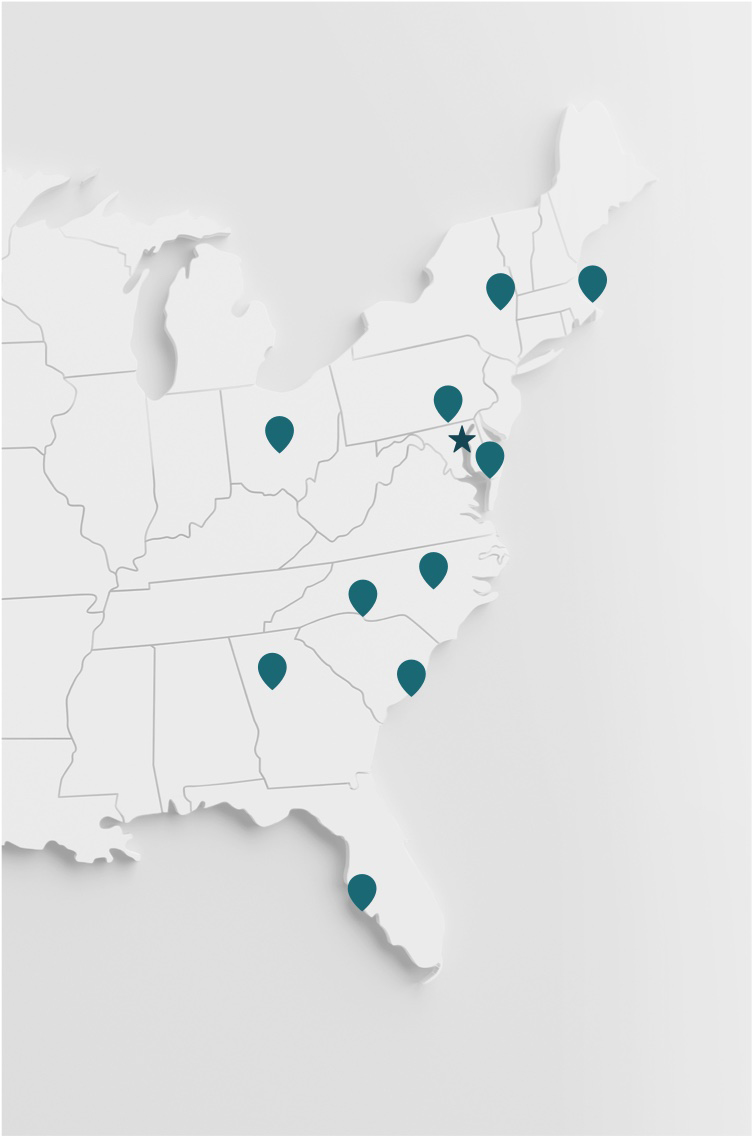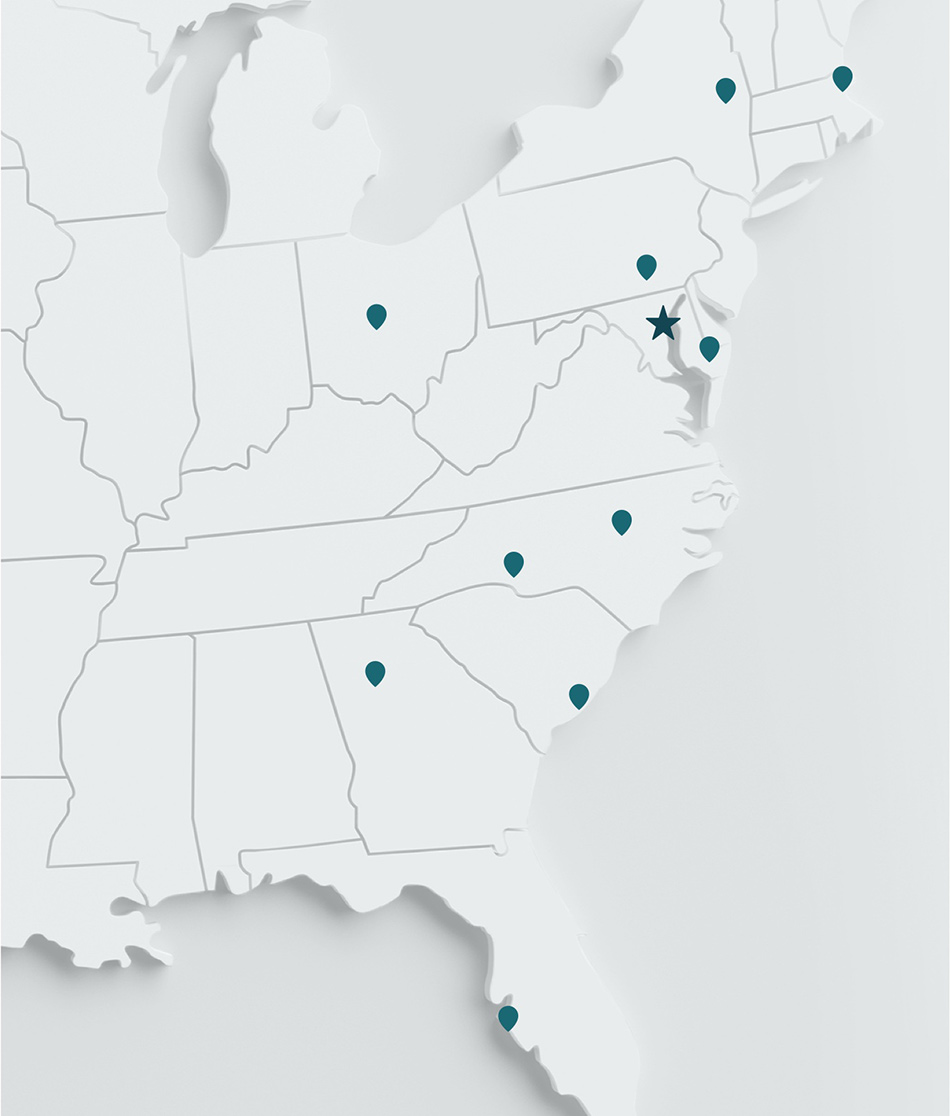
A previous version of the article below was published on the School Construction News website on September 14, 2023. To learn more about School Construction News or to view the original article, please visit their website.
Written by RMF Engineering’s Martha Larson, CEM, Director of Sustainability, and Andrew Hay, P.E., Division Manager, Infrastructure Engineering.
The 2007 Presidents’ Climate Commitment launched a series of commitments whereby hundreds of colleges and universities across the United States pledged to reduce greenhouse gas emissions. While some institutions have made significant progress, many face considerable challenges in meeting established emissions reduction targets. Many modern-day universities manage a portfolio of buildings that vary widely in age and condition. Some struggle with outdated utility systems and even basic upgrades have become increasingly more expensive. As the list of deferred maintenance projects grows, resources for decarbonization efforts can fall short. Campus administrators must weigh a complex mix of competing factors to balance campus stewardship, continued growth, and market competitiveness while also trying to meet their carbon reduction goals.
But the path to campus decarbonization often aligns with necessary maintenance and capital projects. For campuses in need of electrical system upgrades, preparing for strategic electrification is a step in the right direction. Given rapid technological advancements and the decreasing cost of renewable energy, heating system electrification can offer a practical, low-carbon alternative to fossil fuel-based systems. When combined with replacement of aging equipment, strategic electrification can significantly reduce carbon footprints while also addressing critical infrastructure upgrades, achieving operating cost and energy savings, and enhancing system reliability and redundancy.
In a more carbon-conscious world, strategic electrification isn’t just on the horizon – it’s happening. Currently about 40% of total United States electricity already comes from carbon-free sources, an even split between nuclear power and renewable resources (mostly wind, solar and hydropower.) Many cities, states, corporations, and institutions have announced ambitious dates by which they will use only 100% carbon-free electricity. States like New York are even banning natural gas hook-ups in all new construction to promote electrification as a proven path to decarbonization. In some locations, greenhouse gas emissions are tied to direct and indirect financial penalties. For many administrators, the need to build these costs into already-tight budgets will further strain their ability to prioritize ongoing and deferred maintenance projects.
Robust, reliable electrical systems enable broader decarbonization goals. But upgrading campus electric systems in anticipation of electrifying campus heating and fleets is a costly undertaking that requires a multi-year strategy. With a conscientious approach, electrical upgrades can be woven throughout an institution’s existing strategic plans, capital plans, and system renewal programs. As universities plan deferred maintenance and equipment upgrades, preparing the campus electrical grid builds an essential foundation for a more seamless transition to a low-carbon future.
What does it mean to prepare a campus electrical system for a future in which carbon-free electricity powers nearly all of its buildings, vehicles, and equipment? It’s important to first understand the existing system capacity and constraints, both for the campus grid and the local utility provider. Projected campus growth, fleet electrification, and heating system loads should be quantified to estimate future load growth projections as the campus transitions from fossil fuels to electric technologies. Upgrades may include system voltage and capacity increases, transformer and switchgear upsizing, advanced controls sequences and demand management, and backup or redundancy measures. Electrical upgrade plans should be coordinated with the local utility provider based on their physical infrastructure, contractual agreements, and published integrated resource plans.
Careful planning that anticipates future loads, equipment and demand can help inform strategies to manage electrical peaks, thereby reducing costs and potentially avoiding the need for certain costly electrical system upgrades.
Many campuses are electrifying their campus heating systems through a transition from steam heating distribution to hot water distribution and electric heat pumps. Heat pumps can capture and utilize “waste” heat from chilled water processes, building exhaust, or other sources or exchange heat with geo-exchange bore fields, surface water, wastewater and other constant temperature environments. By simply moving available heat to where it is needed, heat pumps achieve a coefficient of performance greater than one, meaning they provide more energy than they use. During ideal operating conditions, a heat pump can be up to 700% efficient! Their incredible efficiency also helps manage electrical peaks. Facility operators often find that the new electrical peaks from winter heat pump operation are not much greater than the past peak due to summer chiller plant operation.
As the cost of solar, wind and battery technologies begins to decline, renewable electricity is becoming a much more affordable form of electricity generation. This, along with policies like the Inflation Reduction Act (IRA), help spur technological and financial innovation while making renewable energy technologies more mainstream and affordable. Campuses that deploy large, on site, renewable energy assets – like commercial-sized wind turbines or utility scale solar arrays – must plan how those generation sources will interconnect with the campus electrical system and any existing generation resources. Campus electrical upgrade projects can be an opportunity to think through what types of renewable energy technologies might be a good fit for the campus and design controls logic and system topology configurations to accommodate them.
Campus utility upgrades also provide the opportunity to modernize electrical control systems that allow for more precise demand management. Pairing modern controls with on-site backup generation often allows institutions to participate in partnerships with local utility providers that offer a lower electricity rate in exchange for the ability to reduce loads on the public grid during periods of peak demand.
The challenges faced by colleges and universities in achieving meaningful emissions reduction milestones are diverse and complex. The age of many institutions, combined with escalating costs and increasing maintenance needs, can seem like barriers to decarbonization. Strategic electrification of campus heating systems requires a multi-year plan and carefully phased implementation. But if done in coordination with other campus capital improvement and maintenance renewal, electrical upgrades can satisfy multiple institutional objectives enabling the transition to a low-carbon future.

